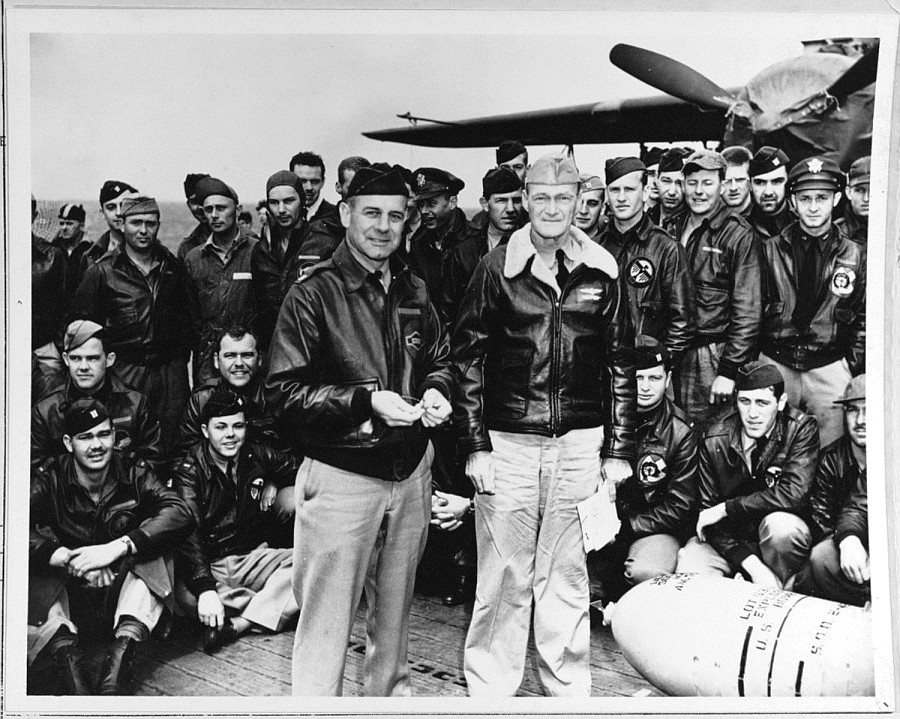- April 18, 2024
-
-
Loading

Loading

They once were among the most universally admired and revered men in the United States. There were 80 of the Raiders in April 1942, when they carried out one of the most courageous and heart-stirring military operations in this nation’s history. The mere mention of their unit’s name, in those years, would bring tears to the eyes of grateful Americans.
After Japan’s sneak attack on Pearl Harbor, with the United States reeling and wounded, something dramatic was needed to turn the war effort around.
Even though there were no friendly airfields close enough to Japan for the United States to launch a retaliation, a daring plan was devised. Sixteen B-25s were modified so they could take off from the deck of an aircraft carrier. This had never been tried — sending such big, heavy bombers from a carrier.
The 16 five-man crews, under the command of Lt. Col. James Doolittle, who himself flew the lead plane off the USS Hornet, knew they would not be able to return to the carrier.
They would have to hit Japan and then hope to make it to China for a safe landing.
But on the day of the raid, the Japanese military caught wind of the plan. The Raiders were told they would have to take off from much farther out in the Pacific Ocean than they had counted on. They were told that because of this, they would not have enough fuel to make it to safety.
And those men went anyway.
They bombed Tokyo, and then flew as far as they could. Four planes crash-landed; 11 more crews bailed out; and three of the Raiders died. Eight more were captured; three were executed.
Another died of starvation in a Japanese prison camp. One crew made it to Russia.
The Doolittle Raiders sent a message from the United States to its enemies and to the rest of the world: We will fight. And, no matter what it takes, we will win.
Of the 80 Raiders, 62 survived the war. They were celebrated as national heroes, models of bravery.
Metro-Goldwyn-Mayer produced a motion picture based on the raid; “Thirty Seconds Over Tokyo,” starring Spencer Tracy and Van Johnson. It was a patriotic and emotional box-office hit, and the phrase became part of the national lexicon. In the movie-theater previews for the film, MGM proclaimed that it was presenting the story “with supreme pride.”
Beginning in 1946, the surviving Raiders held a reunion each April to commemorate the mission. The reunion is in a different city each year. In 1959, the city of Tucson, as a gesture of respect and gratitude, presented the Doolittle Raiders with a set of 80 silver goblets. Each goblet was engraved with the name of a Raider.
Every year, a wooden display case bearing all 80 goblets is transported to the reunion city. Each time a Raider dies, his goblet is turned upside down in the case at the next reunion, as his old friends bear solemn witness.
Also in the wooden case is a bottle of 1896 Hennessy Very Special cognac. The year is not happenstance: 1896 was when Jimmy Doolittle was born.
There has always been a plan: When there are only two surviving Raiders, they would open the bottle, at last drink from it, and toast their comrades who preceded them in death.
As 2013 began, there were five living Raiders; then, in February 2013, Tom Griffin died at age 96.
What a man he was. After bailing out of his plane over a mountainous Chinese forest after the Tokyo raid, he became ill with malaria and almost died. When he recovered, he was sent to Europe to fly more combat missions. He was shot down, captured and spent 22 months in a German prisoner of war camp.
The selflessness of these men, the sheer guts …
There was a passage in the Cincinnati Enquirer obituary for Tom Griffin that, on the surface, had nothing to do with the war, but was emblematic of the depth of his sense of duty and devotion:
“When his wife became ill and needed to go into a nursing home, he visited her every day. He walked from his house to the nursing home, fed his wife and at the end of the day brought home her clothes. At night, he washed and ironed her clothes. Then he walked them up to her room the next morning. He did that for three years until her death in 2005.”
So now, out of the original 80, only one Raider remains: Richard Cole, Doolittle’s co-pilot on the Tokyo raid, age 100.
The Raiders’ last reunion was held in 2013 in Fort Walton Beach. Florida’s nearby Eglin Field was where the Raiders trained in secrecy for the Tokyo mission. The town held a six-day celebration of their valor, including luncheons, a dinner and a parade.
When the final four survivors gathered in Fort Walton Beach, they decided that after that final public reunion they would wait until a later date to get together once more, informally and in absolute privacy. That is when they were to open the bottle of brandy.
Editor’s note: At the time this was originally written, there were four survivors. With David Thatcher’s death June 22, 2016, Richard Cole became the final remaining Doolittle Raider. Doolittle died in 1993.